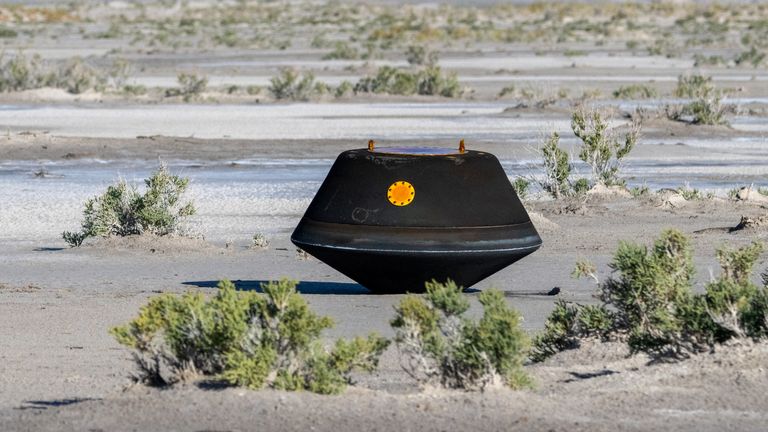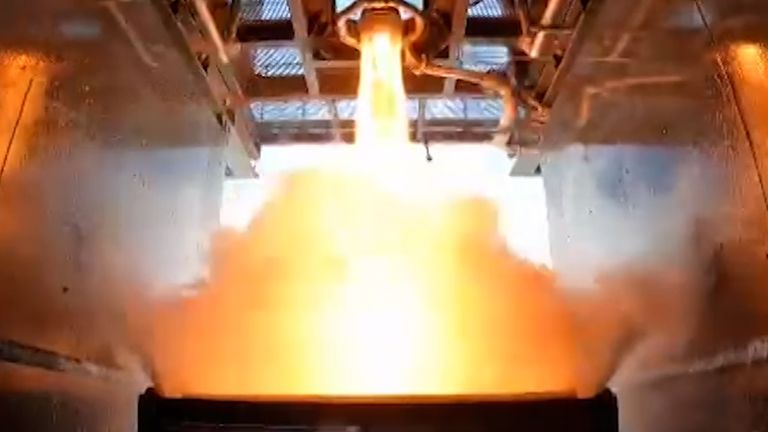Osiris-Rex's sample from asteroid Bennu will reveal secrets of our solar system
Scientists hope the samples from an asteroid will tell us more about what led to life on Earth - but it may not be revealed for a few generations.
Monday 25 September 2023 15:06, UK
It will make the most incredible unboxing video.
In the coming days, NASA scientists will open the capsule containing dust from the asteroid Bennu and delve into the secrets of our solar system.
There are just 250g or so of material inside the heavily protected shell that plunged through the atmosphere before parachuting gently into the Utah's west desert.
But scientists hope it will tell us more about how planets form as well as the origin of organic molecules and water that led to life on Earth.
Smash and grab operation
The Osiris-Rex spacecraft collected the dust in a smash and grab from Bennu in 2020.
The asteroid is a rubble pile of material that formed early in the history of the solar system 4.5 billion years ago.
It's a pristine time capsule because the material has escaped the intense heat and pressure that occurs when planets form - and the weathering that has happened since.
The Earth is regularly bombarded with meteorites, but these undergo chemical changes during their fiery descent through the atmosphere.
That's why the spacecraft was sent more than a billion miles through space to scoop up an unadulterated sample from Bennu.
There is another reason that scientists are interested in the asteroid.
Read more:
Queen star helps NASA mission
Risk of 'significant destruction'
It is the most dangerous known space rock in the solar system, with a one in 2,700 chance of colliding with Earth in the year 2182.
And, at just under 1,640ft (500m) across, it is big enough to create a three-mile (6km) wide crater and produce an airblast that would flatten buildings over hundreds of square kilometres, according to the Imperial College 'Earth impact' programme.
By studying Bennu's composition, scientists will have a better understanding of how they might deal with the threat.
They already know the top layer is surprisingly soft - the Osiris-Rex spacecraft sank 50cm into the surface before it fired its rockets, throwing up a cloud of debris.
Read more about the Osiris-Rex mission:
2018: Osiris-Rex becomes ancient asteroid's first visitor
2019: Closest-ever photo of massive asteroid Bennu
2020: Spacecraft successfully collects asteroid sample
The spongey surface could act a bit like the crumple zone of a car, complicating any attempt to nudge the asteroid out of harm's way by smashing an object into it.
But for now, the focus is on the capsule, safely stowed in an ultra-clean room in Texas to prevent contamination from any earthly material.
Once the capsule has been opened, a 'quick-look' team will try to get top-line results from the dust.
A quarter of the material will then be distributed to scientists around the world for more intensive study.
But the bulk of the contents will be preserved for future generations, when scientists will undoubtedly have equipment and analytical techniques that we can only imagine today.
That's when the secrets of Bennu will really unravel.











